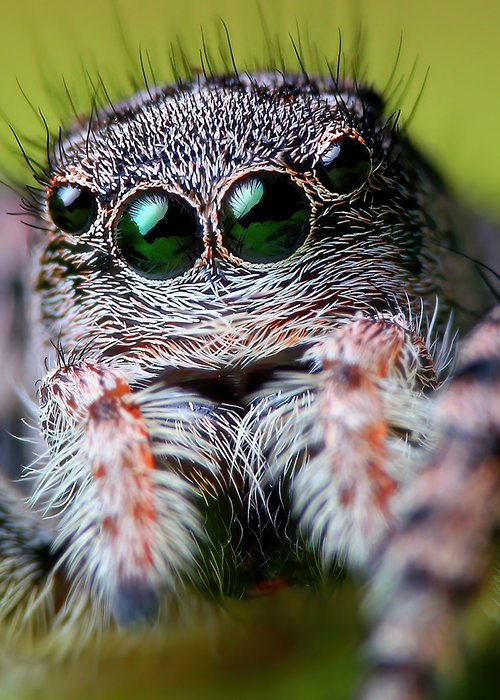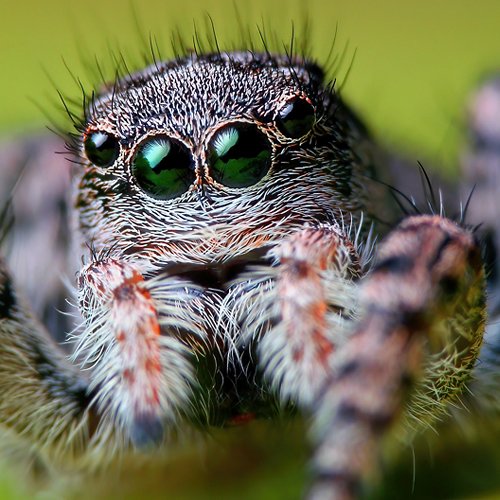There are spiders that weave a classic web, that one we all know, to catch prey. There are others who use the web to line a hole in the ground, building themselves a comfortable, padded den. Still others use silk as a fishing net. Water spiders make cylinders and bells to breathe underwater. Jumping spiders, also known as salticids, do none of these things: they are called jumpers because they ambush and attack their prey by jumping on them, a precise and lightning-fast leap, just like felines. Salticids are generally small in size and have large eyes because they rely on their exceptional eyesight to detect and capture prey. They are the only spiders that can move their eyes like we do: the eyes of other spiders are fixed and motionless, like a pair of glasses. Salticids use a thin silk thread to direct and correct the trajectory of their leap. They use the same thread to build small shelters or swings that they attach to leaves, stones and twigs, where they spend the night. A long night full of dreams...
How so? Do spiders dream? Recent research published in the scientific journal PNAS (Proceedings of the National Academy of Sciences) claims that the 6-millimetre-long jumping spider Evarcha arcuata dreams, perhaps just like us. The fascinating discovery was accidental, as is often the case with the most curious phenomena. Researcher Daniela Rößler from the University of Constance, Germany, observed a small team of spiders enclosed in a jar through a night camera equipped with magnifying glasses. Analysing the footage, she realised that at night the spiders hanging from the lid were stretching their legs, moving their heads and abdomens, and surprisingly, even their eyes. Like in a sort of REM sleep.






